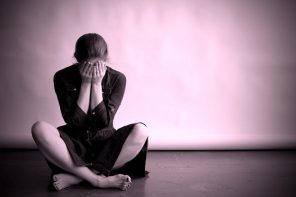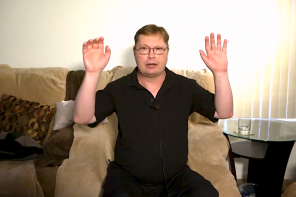What inspired you to write Buddhism, Politics and Political Thought in Myanmar?
My interest in the subject began back in 2002, during my first trip to Myanmar. Along with a friend, I had signed up for a month-long meditation retreat at a monastery near Mandalay. One of the teachers was an American who had been ordained as a monk in Burma. In the early 1990s, a prominent Burmese monk asked this American to talk with Daw Aung San Suu Kyi about vipassana (insight) meditation, as she had recently started to rediscover this part of her heritage. This was a time of incredible intellectual ferment for her—you can see it in some of her writings and speeches of the period—when she was attempting to weave together Buddhism, democracy, rights, etc. Hearing about these discussions fascinated me, and while the retreat was sort of my “conversion” moment to practice as a Buddhist myself, it was also the event that got me started on this intellectual path of trying to better understand the ways in which Buddhist teachings, beliefs, practices and identities affect the ways in which people understand and engage in politics.

Buddhism, Politics and Political Thought in Myanmar
Matthew Walton
Cambridge University Press
Nov 17, 2016
It’s commonplace for many people to say that Buddhism influences politics in a country like Myanmar, but actual attempts to describe that influence usually end up being superficial or over-generalised. I’m describing a “moral universe” of modern Theravada Buddhist thinking that provides key ideas and understandings that Buddhists have used to make sense of the political world they inhabit. If we don’t know the outlines of this worldview (and the variations of interpretation within it), we’re likely to miss many of the subtle nuances of Burmese expressions of political thought; for example, assuming that calls for “democracy” necessarily align with Western liberal democratic notions (that are themselves quite varied).
Is there anything you had to leave out?
The dissertation had quite a bit more comparative content, with other Theravada cases and also with writers and ideas from the Western tradition of political thought. Most of this had to be cut to make it a more Myanmar-focused book, but it’s all coming back in the next book, which is comparative across the Theravada tradition. (Also, I’m a bit ashamed to say that I didn’t fight hard enough to be able to keep the Myanmar language font in my bibliography. Not that it’s—yet—effectively searchable, but it’s something I think authors working in uncommon languages should really try to advocate for. I think when you get to the final stages of a manuscript, it’s unfortunately easy to let some of those things go.)
Because this was a sort of general overview of some of the themes and organizing ideas within modern Buddhist political thinking in Myanmar, I couldn’t get into many sub-topics in great detail. I’m really looking forward to getting to spend much more time with some of the Buddhist-leftist literature from the 1920s-1950s that I could only briefly touch on in this book.
I discuss some of the contemporary “Buddhist nationalist” movement, but some readers might be surprised at how little of it is in the book, given that Myanmar has recently been in the news for the tragic and abhorrent treatment of Rohingya Muslims. In this book, I cover this movement largely in relation to competing notions of monastic participation in politics, but the next book will look at the arguments of this movement in more detail, especially in relation to Buddhist theorizing about the boundaries of inclusion in both political and moral communities.
What are some of the biggest misconceptions about your topic?
I suppose the biggest one would be that Buddhism is somehow “apolitical,” a misconception that many of us are still struggling against, even within academia. The other frustrating thing that people working in non-Western traditions regularly encounter is an assumption that we’ll be conveying the Buddhist view on politics. It’s such an arrogant assumption to believe that all of these rich traditions can essentially be boiled down to a clear set of core ideas, whether related to politics or any other topic. This book tries to identify an influential tradition of political thinking within Burma/Myanmar’s recent history, but I also try to make clear that 1) it’s not the only one and 2) even within it, there’s immense variation in how people use the concepts and ideas that come from their religious belief and practice.
Did you have a specific audience in mind when writing?
I’m trained as a political theorist, but also do work in comparative politics and frequently get asked to contribute to policy discussions. I’m well aware that some of the positions I take in the book are not necessarily new to anthropologists or religious studies scholars, but it’s still very important for us to be arguing for more nuanced incorporations of religion into political analysis. I particularly want to push back against instrumentalist arguments about the ways religion is “used” in politics, instead showing that actors are themselves deeply embedded within their religious worldviews.
Are you hoping to just inform readers? Entertain them? Piss them off?
I don’t imagine that there’s much in this book that would piss people off (I guess I save that for my media contributions). The book starts out with a vignette of the 2007 “Saffron Revolution,” trying to set up the argument that if we don’t understand the ways in which the protesting monks and laypeople were situated within particular streams of thinking and belief, we miss much of the implications and resonance of their statements and actions (and also risk mis-identifying those protests as simply “pro-democracy”).
I really want to draw attention to the depth and complexity of this tradition of thought, not least because it’s been actively repressed by a series of military governments in Burma/Myanmar from 1962-2011 and because it’s been actively utilized in recent years to demonize and exclude Muslims from membership in the political community. Despite this, I’m very excited at the re-emergence of a domestic public political discourse in Myanmar over the past few years and hope that this book can encourage people (inside and outside of Myanmar) to look to this tradition for creative ways of thinking about politics and political matters.
What alternative title would you give the book?
Well, I was a little bummed at the rather mundane title that Cambridge preferred, but I do understand the need for easy keyword searching these days. And also, Hurst was happy to use a variant on my dissertation title (“Politics in the Moral Universe”) for the next book (see below), so it didn’t completely go to waste!
How do you feel about the cover?
I absolutely love the cover! I was adamant that I didn’t want to just use another picture of monks protesting. And fortunately, my very good friend Aung Soe Min is an artist, gallery owner, and all-around renaissance man in Yangon. The cover is from a series he painted entitled “Crisis of Buddhism,” and I think that all of the pieces in the series really capture some of the complex imagery and uncertainty of 2012-13 and the increased political engagement of monks during that period. You can see many of the paintings in the series, along with the work of dozens of other Burmese artists, at Thukhuma’s online gallery.
Is there a book out there you wish you had written? Which one? Why?
Colors of the Robe: Religion, Identity and Difference, Ananda Abeysekara’s book on Buddhism and politics in Sri Lanka. I’m continually impressed with how effectively he holds onto a framing that sees the very categories whose solidity we usually assume (religion, Buddhism, monk, etc) as only ever coming into view at particular moments, usually moments in which their centrality, resonance or very definition are being contested. It’s incredibly challenging to consistently incorporate these poststructuralist insights into our research, yet he manages to say consequential things while still recognizing contingency. His approach to studying religion and politics has strongly influenced one of my current projects, a critical study that’s attempting to disaggregate and better understand the phenomenon of “Buddhist nationalism” in Myanmar.
What’s your next book?
The next book is entitled Buddhism and the Political: Organisation and Participation in the Theravada Moral Universe, and will hopefully be out in 2018 with Hurst. It’s an expansion of the Myanmar book, to look comparatively at Buddhist political thought in Sri Lanka, Thailand, Myanmar, Cambodia and Laos. It develops some of the concepts and frames from this book but hones in particularly on an argument that positions Theravada Buddhist views on human nature as influencing the expansion and contraction of political participation and the boundaries of political inclusion across the last century and a half, regardless of political regime type. So, for example, we can see the growth in mass Buddhist movements in the late 19th and early 20th centuries, the rise of leftist-Buddhist thought in the first half of the twentieth century, and the restriction of popular political participation in contemporary Thailand as outcomes related to the ways in which Theravada Buddhists have viewed the human moral condition.





